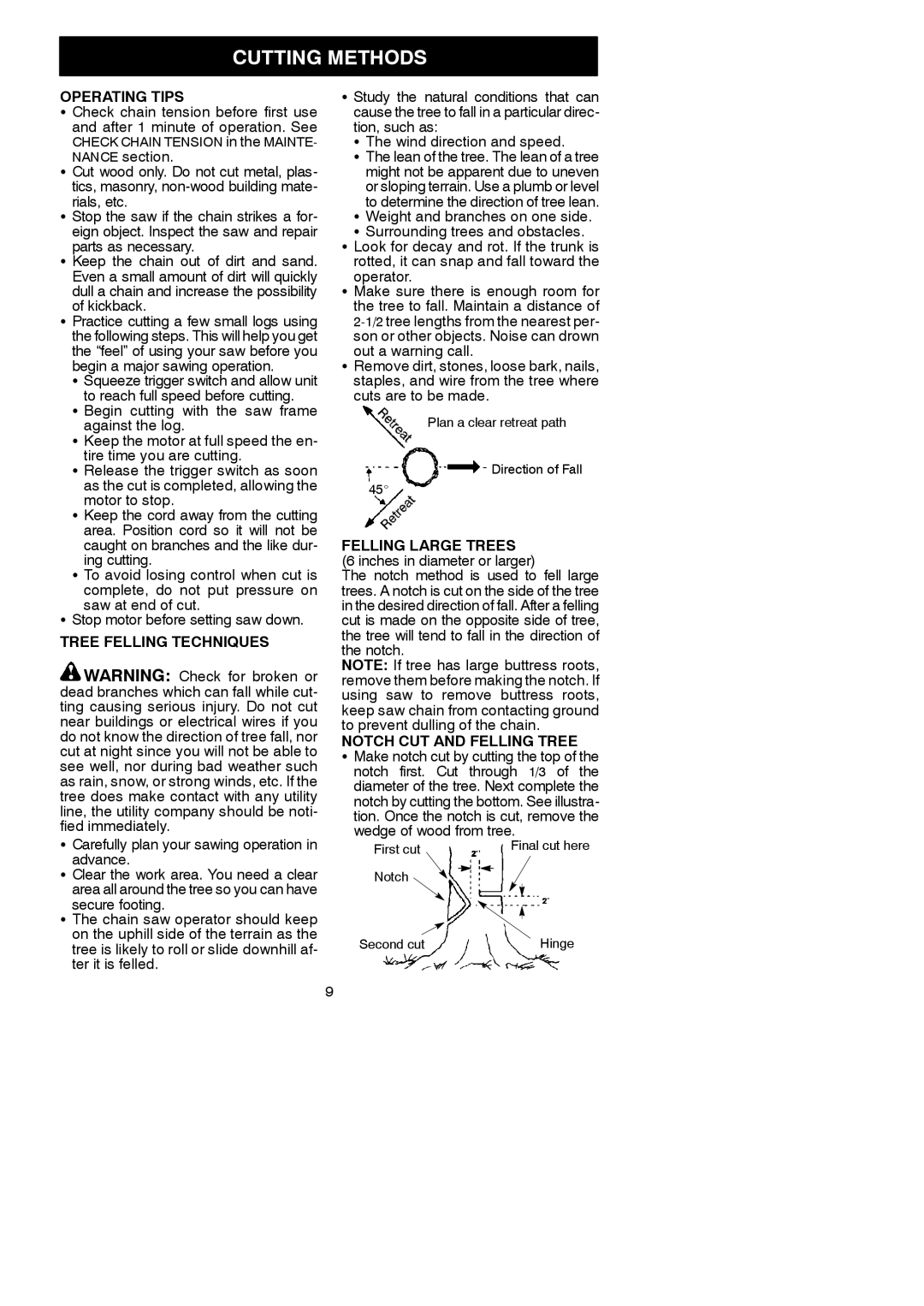115259926, 966432901, ES400 specifications
The Poulan ES400,966432901,115259926 is a powerful and versatile tool designed to meet the demands of both home users and professionals in landscaping and yard maintenance. As an essential part of the Poulan line of outdoor equipment, this model combines innovation, functionality, and durability in a compact and efficient design.One of the main highlights of the ES400 is its robust engine. It features a high-performance 40cc two-stroke engine that delivers impressive power, making it capable of tackling a variety of tasks ranging from trimming grass to cutting through thicker brush. This engine is designed for enhanced efficiency, ensuring less fuel consumption while still providing robust performance.
The ES400 is built with user comfort in mind. It comes with an ergonomic handle that minimizes user fatigue during extended periods of use. The lightweight design further enhances its usability, allowing for easy maneuverability around the yard or garden. Users will appreciate the well-balanced design, which contributes to overall handling and control, making it suitable for both novice users and seasoned professionals.
Another noteworthy characteristic of the Poulan ES400 is its innovative technology. This model features an automatic choke system, which simplifies the starting process and reduces the chances of engine flooding. This is particularly beneficial for users who may not be as familiar with two-stroke engines, enabling them to achieve reliable starts with minimal effort.
The maintenance aspect of the ES400 has also been prioritized. The easy-access air filter and spark plug allow for quick and convenient servicing, ensuring that users can keep their equipment in top condition with minimal downtime. Furthermore, this model incorporates advanced vibration-dampening technology, greatly reducing vibrations transmitted to the user and enhancing overall comfort.
The Poulan ES400,966432901,115259926 is also designed with versatility in mind. It can be easily fitted with various attachments, transforming it into a multi-functional tool for different lawn care tasks. Whether it's edging, pruning, or hedging, the ES400 adapts to meet a vast range of needs.
In summary, the Poulan ES400,966432901,115259926 stands out as a reliable outdoor tool with its powerful engine, user-friendly features, advanced technology, and versatility. Designed for both comfort and efficiency, this model is an essential addition for anyone looking to maintain their yard with ease and precision.

